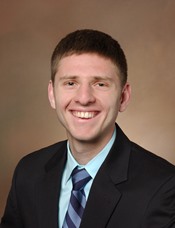Functional Image-Guided Targeting and Avoidance in Radiation Therapy
Y Vinogradskiy1*, M Matuszak2*, B Han3*, A Sawant4*, (1) University of Colorado Anschutz Medical Campus, Aurora, CO, (2) University of Michigan, Ann Arbor, MI, (3) Stanford University School of Medicine, Stanford, CA, (4) University of Maryland School of Medicine, Baltimore, MD
Presentations
10:55 AM Functional Avoidance in Liver RT Using DCE MRI - M Matuszak, Presenting Author
11:20 AM Initial Experience on a Real-Time Biologically-Guided Radiotherapy System - B Han, Presenting Author
11:45 AM Combining Virtual Bronchoscopy and Ventilation Mapping for Preserving Post-SAbR Respiratory Function - A Sawant, Presenting Author
12:10 PM Q&A & Panel Discussion - A Sawant, Presenting Author
TU-AB-TRACK 4-0 (Tuesday, 7/27/2021) 10:30 AM - 12:30 PM [Eastern Time (GMT-4)]
Function-guided radiation therapy using various imaging modalities such as CT, MRI, PET, and SPECT, may play a role in reducing toxicity as well as improving local control by targeting resistant disease and enabling treatment planning that can use a normal tissue regional function map in order to minimize the probability of radiation-induced toxicity or maximize the probability of post-treatment function. This session is focused on efforts to develop and clinically translate various functional image-guidance technologies across a variety of disease sites and disease stages.
In the first talk, we will discuss functional avoidance lung radiotherapy, which uses 4DCT to map regional lung ventilation. These maps are used to generate radiotherapy plans that reduce doses to functional regions of the lung. We will present early findings from a phase II, two-center, study that evaluated 4DCT-ventilation functional avoidance radiotherapy. The talk will report on the primary trial outcome of radiation pneumonitis. Secondary outcomes reported include non-pneumonitis thoracic clinical toxicity and functional avoidance dosimetric results.
In the second talk, we will highlight recent work on function guided treatment planning using multiple imaging modalities in liver, lung, and head and neck. We will discuss in detail the clinical workflow and preliminary results from recent, prospective clinical trials on response-based adaptive therapy using FDG-PET and V/Q SPECT in advanced stage lung cancer and gadoxetic acid MRI for liver SBRT
In the third talk, we will discuss the first clinical experience with a novel biology-guided radiotherapy (BgRT) system equipped with PET imaging, Reflexion X1. We will discuss beam QA and commissioning procedures following the TG-148 protocol. We will report on performance characterization of the PET subsystem following the NEMA NU-2 2018 standard. We will also report on the imaging performance in CT mode and on the dosimetric and geometric accuracy of the system. We will report on the design of an early-phase clinical trial to quantify and evaluate the FDG dose for daily PET guidance, expected to start in April, 2021.
In the fourth talk, we will discuss a novel lung functional avoidance strategy that accounts for serial (central and peripheral airways) and parallel (parenchyma) components of lung function. We will discuss a virtual bronchoscopy-based technique to spatially map the airway tree, and connect the air supply pathways with functional sub-lobar lung regions. We will discuss the development of a radiation response model for individual airway segments and the incorporation this model with NTCP models for lung parenchyma to create functional avoidance plans that minimize post-radiotherapy ventilation loss in lung cancer patients.
In the last part of the symposium, we will have a Q&A session for discussions between session organizers, speakers, and the audience.
Learning Objectives:
1. Understand the motivation and the basic concepts of functional guidance in radiotherapy
2. Keep up to date on the latest functionally-guided RT clinical trials
3. Understand the clinical requirements and technical characterization of a novel biologically-guided radiotherapy system
4. Understand the current challenges in functional-image-based guidance and novel strategies to address these challenges
Funding Support, Disclosures, and Conflict of Interest: Amit Sawant has funding support from the National Cancer Institute and from Varian Medical Systems
Handouts
- 166-57819-15651646-171809-313350805.pdf (Yevgeniy Vinogradskiy)
- 166-57821-15651646-171206-386811405.pdf (Bin Han)
Keywords
Functional Imaging, Ventilation/perfusion, Image-guided Therapy
Taxonomy
Not Applicable / None Entered.
Contact Email











